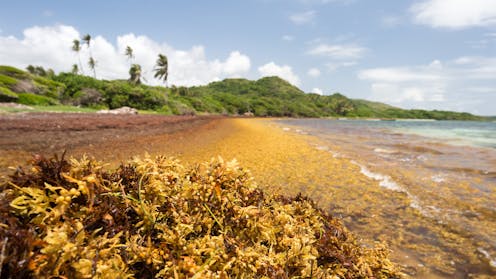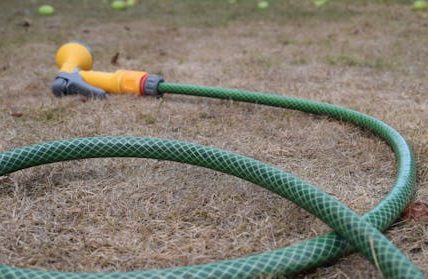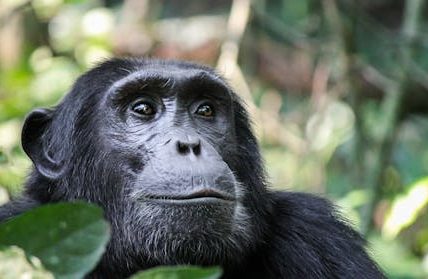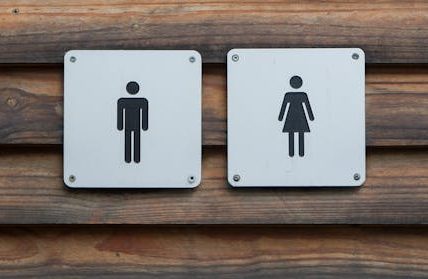How a toxic seaweed choking Caribbean beaches could become a valuable resource
Each year, between March and October, large amounts of brown seaweed called sargassum wash up on the shores of Caribbean islands – choking beaches, damaging marine life and threatening tourism and public health. But a number of local entrepreneurs are hoping the seaweed could create an economic opportunity.
From the coast of west Africa to the Caribbean Sea and the Gulf of Mexico, climate change is warming the temperature of the ocean. Seas are also becoming more acidic as water absorbs carbon dioxide. This all results in more intense growth of sargassum in the tropical Atlantic.
Small Caribbean nations are among the hardest hit. With 20 million tonnes of this seaweed washing up on the beaches in 2024, sargassum is fuelling an economic and public health crisis.
The piles of noxious seaweed on the Caribbean islands’ white sandy beaches are putting off visitors to these islands and probably dampening tourism revenues.
Get your news from actual experts, straight to your inbox. Sign up to our daily newsletter to receive all The Conversation UK’s latest coverage of news and research, from politics and business to the arts and sciences.
The fishing sector is also suffering, with blooms of seaweed getting caught up in fishing nets, often ripping them due to the weight of the seaweed. This makes it hard for fishers to catch fish and make a living.
The sheer volume of sargassum left to decompose on land produces toxic fumes that have forced people on islands like Guadeloupe to leave their homes. These toxic fumes have been linked to serious health issues including respiratory infections, sleep apnoea and even preeclampsia (high blood pressure during pregnancy).
The sargassum problem is just one of many slow-onset events that are being exacerbated by climate change. But gradual changes get much less attention or resources to address the consequences than, say, alarming wildfires or flash floods.
Slow-onset events are also much harder to quantify than climate-change-induced extreme weather, such as worsening hurricanes or floods. Our team at ODI Global, a thinktank, recently published a study that estimated the cost of these at US$2,000 (£1,500) per person. Calculating the tourism lost each year due to seaweed inundation is trickier.
Despite these challenges, through small-scale, locally developed solutions, as well as government policies that support small businesses including helping them access climate finance, entrepreneurs can find sustainable solutions to help their populations thrive in an era of climate change.
Legena Henry, a lecturer at the University of the West Indies in Barbados, uses sargassum to produce a biofuel that can power cars. Johanan Dujon, the founder and chief executive of St. Lucia-based Algas Organics sells plant tonics made from sargassum and is trialling methods to convert sargassum into paper.
Meanwhile, other innovations are helping to minimise the impacts of sargassum in the region.
Andrés León, founder of SOS Carbon, a spin-off organisation from the mechanical engineering department at the Massachusetts Institute of Technology, has designed a boat-based harvester to collect sargassum at sea to stop it from beaching and causing damage onshore.
Some islands, such as Jamaica, are using early warning systems, typically used to predict hurricanes, to predict the ocean currents that might bring a bumper arrival of the seaweed to their shores. This could give fishers up to 30 days notice of just how bad the inundation will be.
Barriers to scale up
But while small businesses are emerging, turning them into larger enterprises across the region remains difficult. As usual, small island nations struggle to get funding because investors think the projects are too small and won’t make enough money.
As Legena Henry recently told us on the Small Island Big Picture podcast, spending a few million dollars (as opposed to a few hundred million dollars) can feel administratively cumbersome for funders as they often have limited administrative capacity and large sums of money to manage.
Another issue is ensuring the benefits from any sargassum solutions flow into the affected Caribbean islands to support local growth and economic development.
Several opportunities exist for small island nations to generate some income from sargassum. They could, for example, sell licences to permit companies to harvest sargassum within their exclusive economic zones, which can stretch around many islands for hundreds of nautical miles.
They can also sell licences to businesses trialling or operating new sargassum technologies within their exclusive economic zones — for example, SOS Carbon has a patent pending for technology designed to sink sargassum to the seabed to store carbon.
Will sargassum continue to be a nuisance, or could it be an important renewable natural resource? It’s not yet clear.
Ideally, as with other renewable natural resources in developing countries, small island nations that own the sargassum need to find ways to extract a fair share of the value from that ownership, as well as selling to external companies that come in, remove it and profit from it.
With tax incentives and low-cost finance for domestic innovators, small islands can manage and sell sargassum and then use the proceeds to develop climate resilience measures.
Don’t have time to read about climate change as much as you’d like?
Get a weekly roundup in your inbox instead. Every Wednesday, The Conversation’s environment editor writes Imagine, a short email that goes a little deeper into just one climate issue. Join the 45,000+ readers who’ve subscribed so far.
Emma Tompkins received funding for work on sargassum from the Economic and Social Research Council GCRF (Grant number: ES/T002964/1)
Emily Wilkinson does not work for, consult, own shares in or receive funding from any company or organisation that would benefit from this article, and has disclosed no relevant affiliations beyond their academic appointment.



